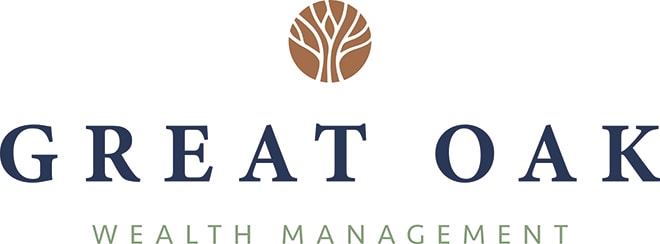There are many different types of retirement savings accounts that may be available to you over the course of your career. While there are many similarities between retirement savings accounts, each has its own quirks. The jumbled acronyms don’t help add clarity to what these accounts are or how they function. TSP, 403(b), and 457(b) are three retirement saving account types with their own unique features that are only available to select groups of employees in the public sector.
Federal Employees
A TSP is a Thrift Savings Plan. If you are a federal employee or the military, you will use this plan as your retirement investment account. A TSP is a retirement savings plan that parallels a 401(k) for those in the private sector.
There are many similarities between a TSP and 401(k) when comparing their functions. Both allow for automatic payroll contributions and employer/agency matches. You may make tax-deferred or Roth payroll contributions. The similarities continue to the contribution limits, just as in a 401(k), the maximum amount you can contribute to a TSP in 2024 is $23,000. The employer match in your TSP is dependent on your agency. The maximum match you can expect is 5%.
The investment selection is one of the few differences between 401(k)s and TSPs. 401(k)s typically offer a selection of funds that may include funds from multiple fund companies. Whereas the selection is limited in a TSP, you have a lineup of 5 funds plus LifeCycle funds. All TSPs offer the same specific set of funds referred to by alphabetical letter, i.e., the ‘F Fund’ is the Fixed Income Index fund. The available fund lineup also includes the LifeCycle funds for those wanting an ‘all in one’ type of investment.
Once you separate from service, you may roll your TSP to an IRA to access your funds in retirement. Given the limited investment selection and abundance of low-cost investment options now available, there is little reason to leave your funds in a TSP in retirement. Like a 401(k), if you need the funds before 59 ½, you will be facing a 10% penalty on any tax-deferred funds that you withdraw. There are many more similarities between TSPs and 401(k) than differences.
Tax-exempt organizations
School districts, healthcare organizations, and other tax-exempt organizations offer their employees retirement savings in the form of a 403(b) plan. A 403(b) follows the same functional design as TSPs and 401(k)s via payroll contributions and matching. There are a few more differences between a 403(b) and 401(k) than we saw with the TSP.
In a 403(b), there is a possibility for an additional catch-up contribution provision per the IRS. If your employer allows it, and you have been employed there for 15 years (with no age constraint), you may contribute an extra $3,000 annually (maximum $15,000 lifetime). In a 401(k), any additional contributions come with an age requirement; you must be at least 50 years of age.
The investment selection lineup is more limited in a 403(b) than a 401(k) but less limited than a TSP. You will also find that 403(b)s offer annuity selections. The annuity offering is a remnant of the history of this type of account, initially referred to as a ‘tax-sheltered annuity.’
If you leave your employer, you may roll your 403(b) into an IRA or even a 401(k) if you move to the private sector. Again, accessing your funds before 59 ½ is costly; the 10% early withdrawal penalty applies to 403(b)s too.
State and local government employees
The third retirement savings plan you may run into in the public sector is a 457(b). A 457(b) plan is most commonly offered to state and local government employees. There are a few twists to 457(b) rules that make it feel a bit like the black sheep of the group. The contribution limit of $23,000 in 2023 applies to all sources. The sum of the employee deferral and the employer match is capped at the limit. Employer matches tend to be less common with 457(b)s.
There is a unique approach to the catch-up contributions permitted in a 457(b). You may double your contribution in the three years before your federal retirement age. The special catch-up allows you to sock away more in those last few years of working than you could in any of the other savings vehicles we’ve discussed in the blog. In reality, the special catch-up is only meaningful for a handle of employees because of the caveats. The special catch-up is not in addition to the $7,500 catch-up for those 50 and over. Nor is it available if you were already maxing out your 457(b).
Your investment options will be more limited than a 401(k) fund lineup. However, if you need to access the funds early, you do not face a 10% penalty for an early withdrawal. A distribution of tax-deferred funds will be taxable but without the penalty.
Combinations
With all three of these different savings plans, you can save outside of the plan. If you have the ability and are within the income limits, you can also contribute to an IRA or a Roth IRA. There are no income limits on saving to a taxable account; that is always an option if you want to save more and already max out your retirement plan. Creating and revisiting your savings strategy throughout your career will set you up for an efficient retirement income stream down the line. Our blog, Reduce your retirement risk with an effective retirement distribution strategy, is a resource for structuring the various pieces of your portfolio once you are in retirement.
The TSP, 403(b), and 457(b) plans are not always silos; sometimes, they are used together. You may find an employer’s benefits include a combination of retirement plans. For example, your employer may offer both a 457(b) and a 403(b); they are not mutually exclusive. You can contribute to both simultaneously if they are both available to you.
Once you wade through the jumble of retirement account acronyms and their unique rules, you can develop a plan to maximize how you are using the accounts that are available to you. TSPs, 403(b)s, and 457(b)s each offer their own advantages and limitations. With your advisor, you can develop an efficient savings plan by reviewing the fees, the limits, outside savings, and tax impacts.








